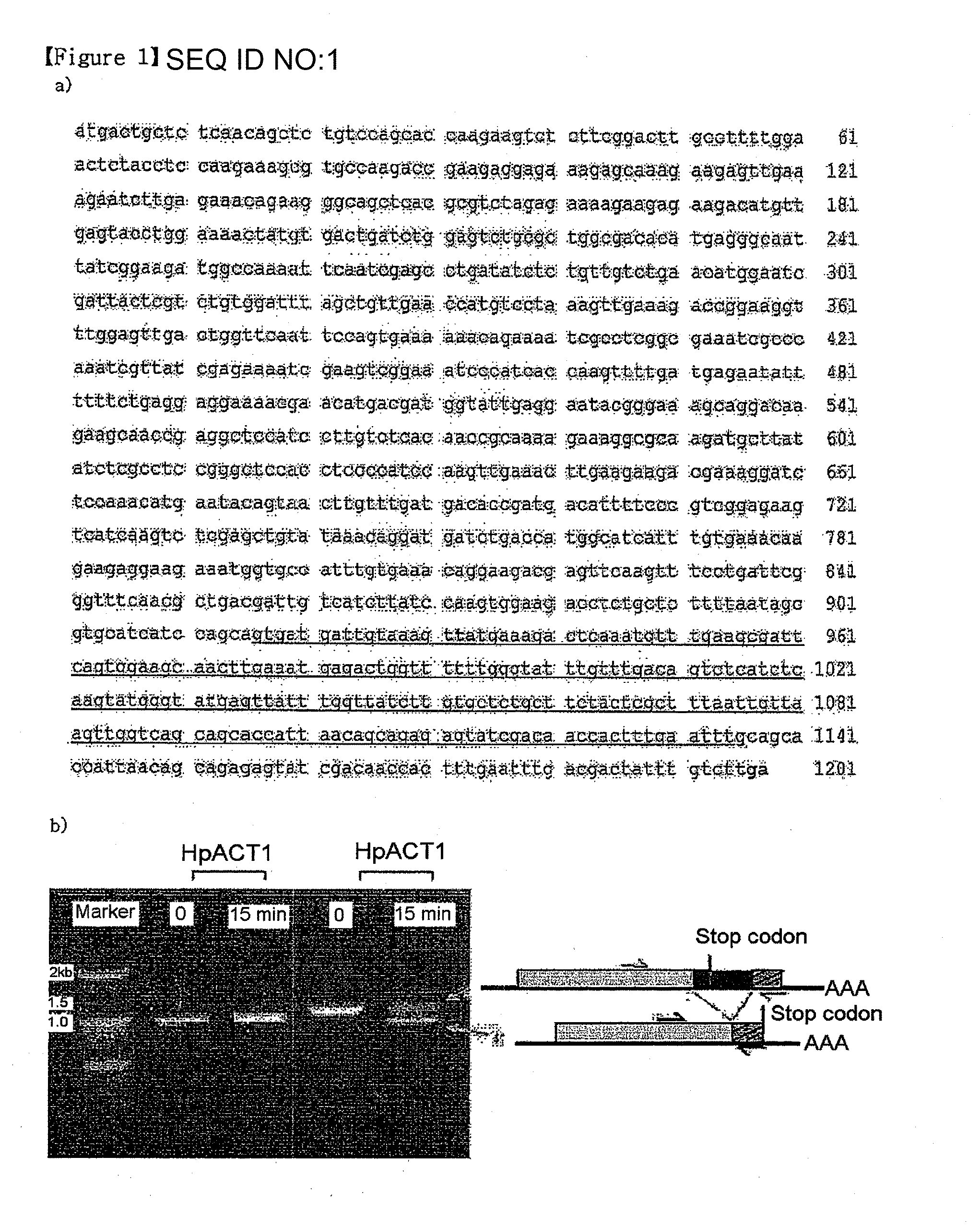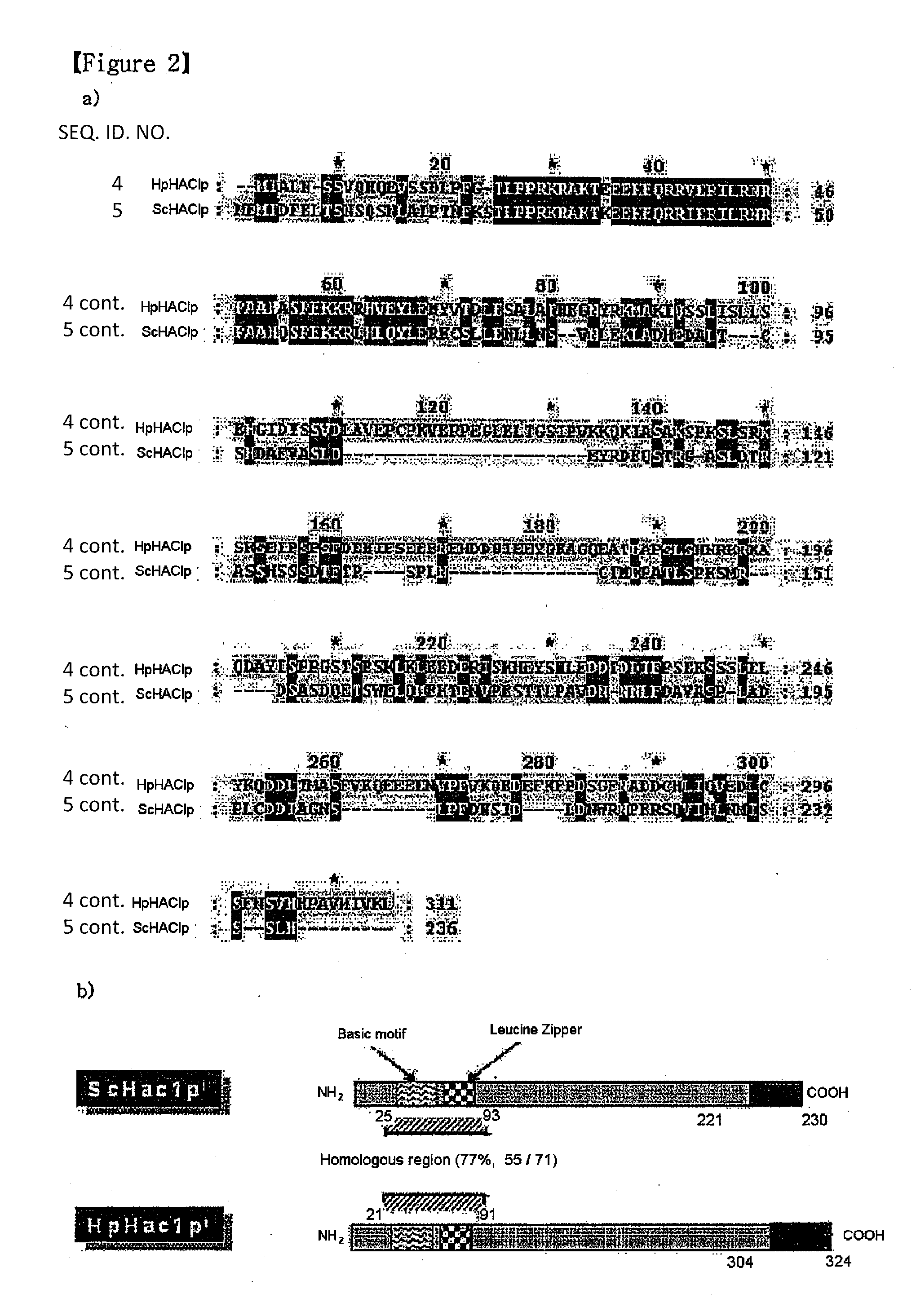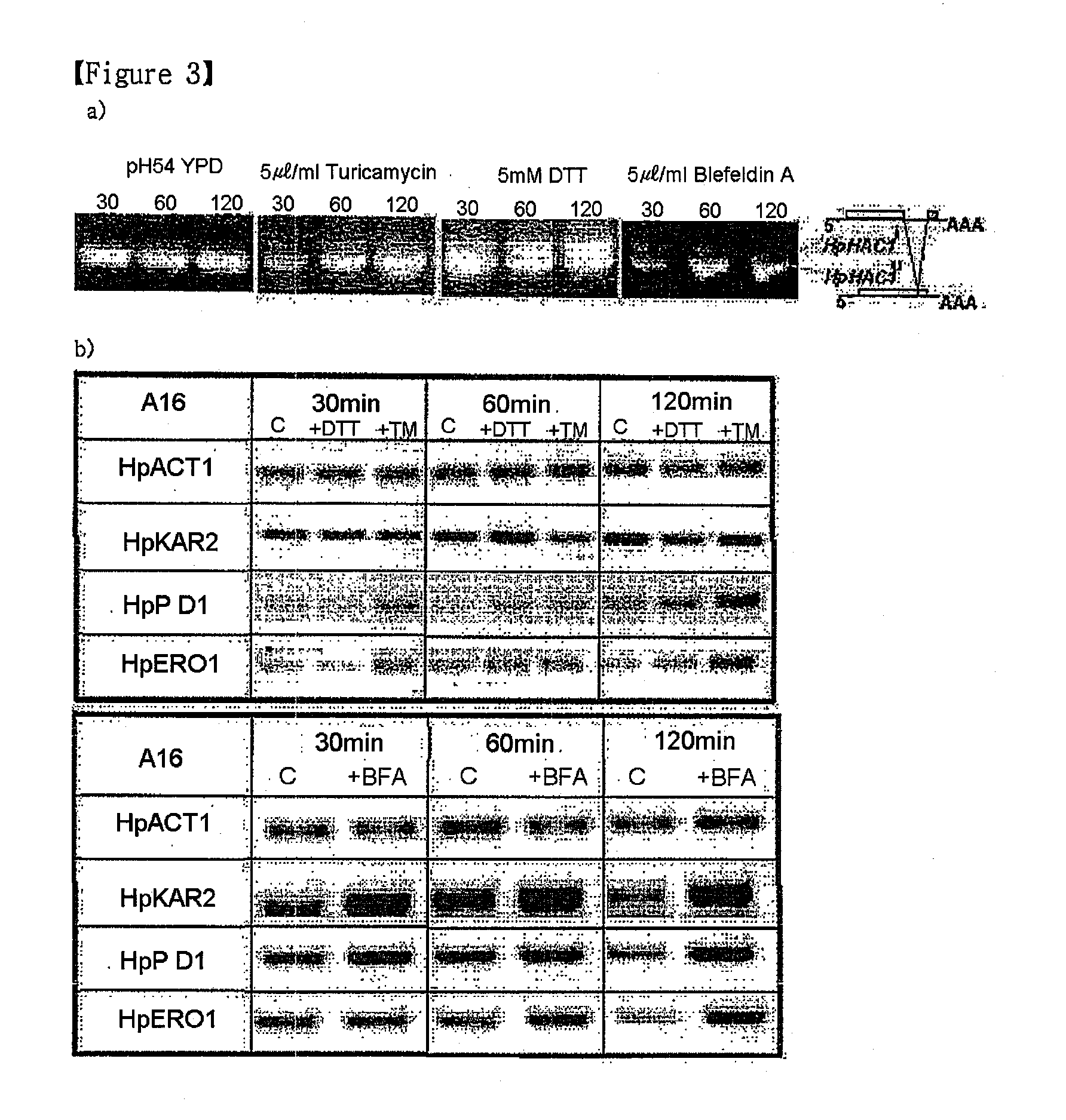Novel gene from hancenula polymorpha capable of controlling unfolded protein response and method for increasing effect of secretion using the same
- Summary
- Abstract
- Description
- Claims
- Application Information
AI Technical Summary
Benefits of technology
Problems solved by technology
Method used
Image
Examples
example 1
[0058]Confirmation of HpHAC1 Splicing in H. Polymorpha
[0059]From the genome sequence database of H. polymorpha, which has been recently completed (Ramezani-Red et al., FEMS Yeast Res., 4, 207-5, 2003), a H. polymorpha ORF (open reading frame) showing the highest homology to the S. cerevisiae HAC1 gene coding for a UPR transcription factor was identified (FIG. 1A). However, the level of homology between two yeast genes was quite low (about 15%), so that several experiments were performed to confirm the estimated function of the H. polyomorpha homolog. In order to confirm that the H. polymorpha gene is an actual correspondent of the S. cerevisiae HAC1 gene, a reverse transcriptase-polymerase chain reaction (RT-PCR) was performed to analyze whether the H. polymorpha gene undergoes a non-conventional splicing event under a UPR induction condition, which is known as the most typical characteristic of ScHAC1.A H. polymorpha strain, DL-1 (Levine and Cooney, Appl. Microbiol., 26, 982-990, ...
example 2
[0064]Exploration of Conditions for Inducing UPR (Unfold Protein Response) in Hansenula Polymorpha
[0065]To check whether UPR was induced, the splicing of HpHAC1 mRNA (FIG. 3A) and the increased expression level of the conventional UPR target genes (FIG. 3B) were examined using RT-PCR. The A16 strain derived from H. polymorpha CBS 4732 was treated with stress-inducing agents, such as tunicamycin, DTT (Dithiothreitol), and Blefeldin A, in order to induce various secretion stresses including glycosylation inhibition, reduction stress, and inhibition of protein transport in the ER, respectively. The optimal concentrations of the stress-inducing agents to induce UPR in the treated cells were examined.
[0066]First, in order to cultivate yeast cells, YPD (yeast extract 1%, bacto peptone 2%, and glucose 2%) medium containing glucose as a main carbon source was used. The cells were cultured in 3 ml of YPD medium at 170 rpm, 37° C. for 16 hours, and inoculated in 50 ml of YPD medium to be an ...
example 3
[0069]Construction and Characterization of the HpHAC1 Gene Deletion and Overexpression Strains
[0070]In order to construct a H. polymorpha HpHAC1 deletion mutant, the HpHAC1 gene was deleted using fusion PCR and in vivo DNA recombination (Oldenburg et al., Nucleic Acid Res., 25, 451, 1997).
[0071]In the primary PCR, four pairs of primers described in Table 1 were used to amplify each N-terminus and C-terminus of LEU2 gene (N-terminus; LeuN-for, LeuN-rev, C-terminus; LeuC-for, LeuC-rev) and HpHAC1 gene (N-terminus; HpHAC1-N-for, HpHAC1-N-rev, C-terminus; HpHAC1-C-for, HpHAC1-C-rev). Then, in the secondary fusion PCR, two pairs of primers were used to link the N-terminus of HpHAC1 gene and the N-terminus of LEU2 gene (HpHAC1-N-for, LeuN-rev), and the C-terminus of LEU2 gene and the C-terminus of HpHAC1 gene (LeuC-for, HpHAC1-C-rev). Each obtained DNA fragments were introduced into yeast cells, and the transformants with the HpHAC1 gene deletion by in vivo DNA recombination were screened...
PUM
| Property | Measurement | Unit |
|---|---|---|
| Fraction | aaaaa | aaaaa |
| Fraction | aaaaa | aaaaa |
| Stress optical coefficient | aaaaa | aaaaa |
Abstract
Description
Claims
Application Information
 Login to View More
Login to View More - R&D
- Intellectual Property
- Life Sciences
- Materials
- Tech Scout
- Unparalleled Data Quality
- Higher Quality Content
- 60% Fewer Hallucinations
Browse by: Latest US Patents, China's latest patents, Technical Efficacy Thesaurus, Application Domain, Technology Topic, Popular Technical Reports.
© 2025 PatSnap. All rights reserved.Legal|Privacy policy|Modern Slavery Act Transparency Statement|Sitemap|About US| Contact US: help@patsnap.com



